To enjoy the many remarkable things to do in Tibet you have to get there first. There are several ways to visit Tibet. But however you arrive and however you plan your Tibet itinerary you are sure to have a transformative experience…and one heck of a good time! We chose the popular Xining to Lhasa route to Tibet across central China, and here’s what happened.
Table of Contents
ToggleHow to Get to Tibet
A journey to Tibet across central China had been a dream of mine since I first learned of Tibet’s existence. How could I not be fascinated by this legendary land with areas so remote some have never been inhabited? Every time I tried to get there, however, things got complicated, I ran out of time or the entry regulations changed. Finally, my opportunity for Tibet travel arrived!
Although we traveled to Tibet by car, actually Toyota Land Cruisers, a train route from Xining to Lhasa is also available and popular. Many local companies offer this service, and it is wise to evaluate several before deciding on one.
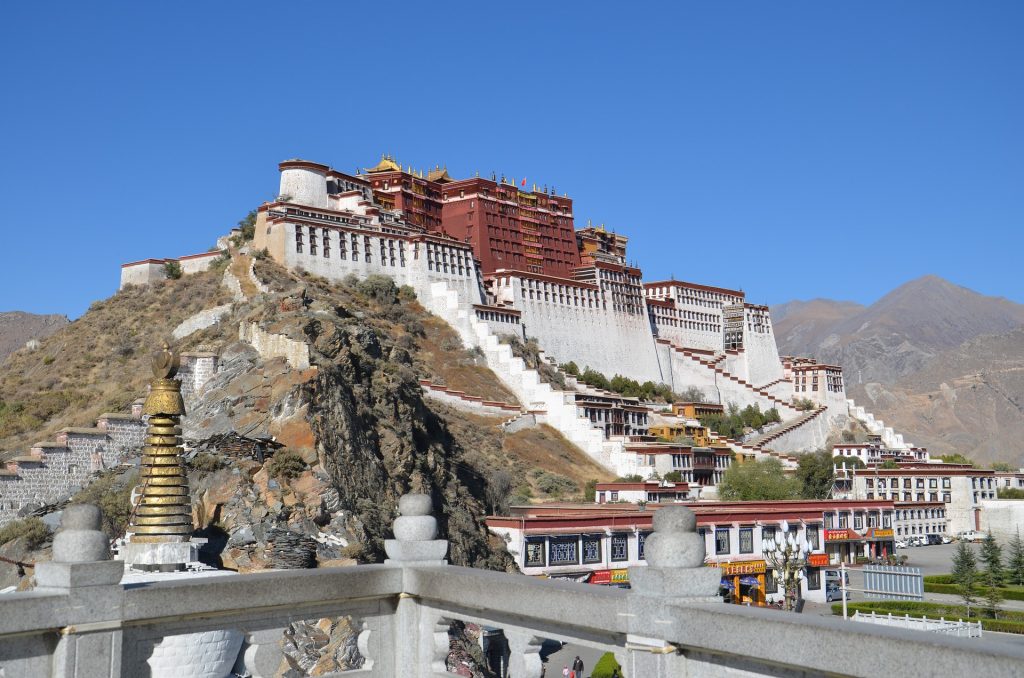
Tibet is an autonomous region of China where political turmoil flairs up occasionally. The Chinese government maintains strict controls on Tibet tourism.
Entry Requirements for Tibet
Entry regulations for foreigners are constantly changing and independent travel is prohibited. Foreigners can only enter Tibet with an organized group and must stay with them for the duration of the tour.
Traveling to Tibet with a group is fine provided you go with a cool group. I was lucky to end up with a nice group of Chinese tourists. I had heard a rumor that non-Chinese tourists needed to be isolated from Chinese tourists and shepherded around by a guide specifically for them. I saw no evidence of this and was happily welcomed into the group of all-Chinese travelers who practiced their English with me and shared their meals.
Besides this group requirement, foreigners need a China visa. You also need a special, separate permit to enter Tibet. Some people mistakenly refer to this as a Tibet visa, but it is, in fact, a Tibet permit. This can only be obtained from agencies authorized by the Tibet Tourism Bureau Tibet Tourism Bureau in Lhasa, the capital.
As daunting as these regulations may sound, there are many local, government-approved agencies that will help make the entry process quick and efficient. You can find them online. Here is one example.
These agencies are authorized to organize any number of Tibet tours including camping and caravans through central China with Land Cruisers.
Our group entered from Xinang in the north-east and drove in a caravan across central China to Lhasa. The trip took about three days.
Legend has it during China’s Tang Dynasty, 618 to 907 AD, Princess Wencheng took this same road to marry the king of Tibet. I can only imagine how long it took her to make this same trek.
Journey from Xining to Lhasa, Tibet
We flew from Beijing to Xining where we met the group.
From Xining, a pleasant, bustling Chinese city with terrific food, we drove to Golund. I had researched Golund beforehand and found a comment in a guidebook that said, “Unless you are a hydraulic engineer or a fugitive hiding from the law there is no earthly reason to go to Golund.” I thought that was pretty funny. It made me curious to see the place. I wasn’t there long enough to dispel or confirm this description, but I understand Golund has some interesting natural parks.
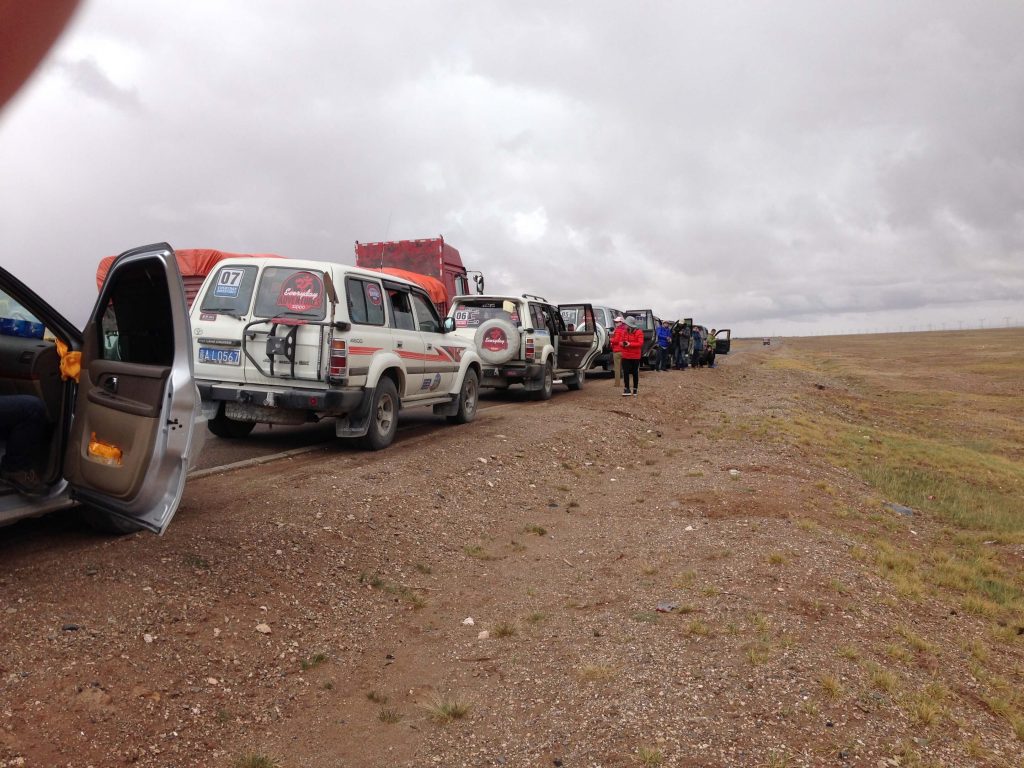
On the journey to Tibet, the road to Lhasa on the central China route is isolated. You can travel for miles without seeing a soul.
Mostly we drove through deserts and windy plains. In several locations construction crews seemed to be still building the road even as we approached. In these areas, we’d divert and drive on unpaved land, sometimes for miles, until we found the road again. This would have made a great commercial for the Toyota Land Cruiser.
Every once in a while throughout the trip, the local police would stop us and check our documents. As we got closer to Tibet the inspections became more frequent and thorough.
At one location, about 30 miles north of Tibet, we were detained in a guardhouse. The guards offered us water, practiced their English on us, checked our papers and let us go.
Tibet is the only place in China I have been stopped and questioned. Generally, what I do or where I go in China is a matter of supreme indifference to the local authorities.
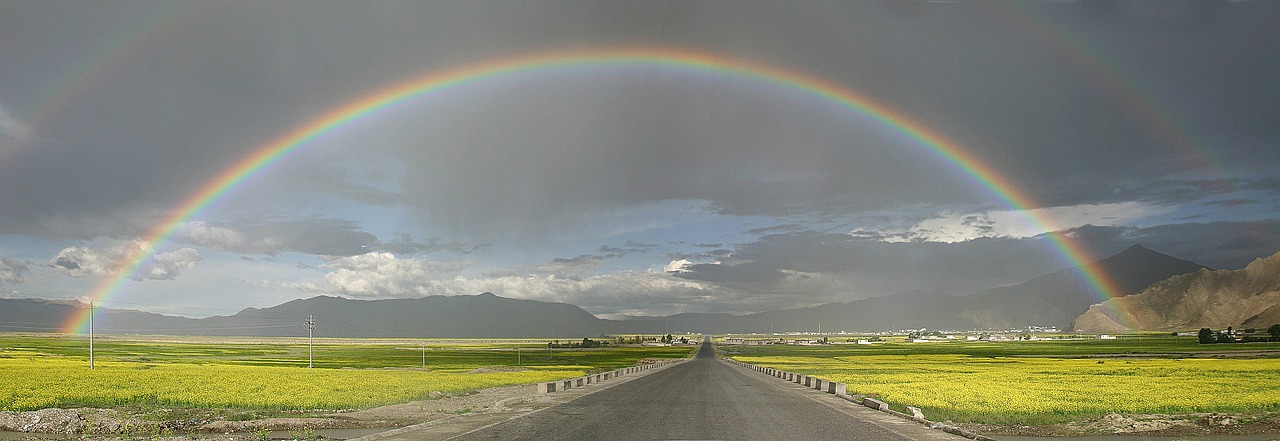
Camping in Tibet by Qinghai Lake
At Qinghai Lake, we camped in tents by the lake. We killed and roasted a sheep for dinner. The mayor of the nearby town came over to our camp. I thought maybe we had violated some town ordinance like “no butchering sheep within city limits” but he just wanted to welcome us. We shared our sheep dinner and Baidu (Chinese liquor) with him.
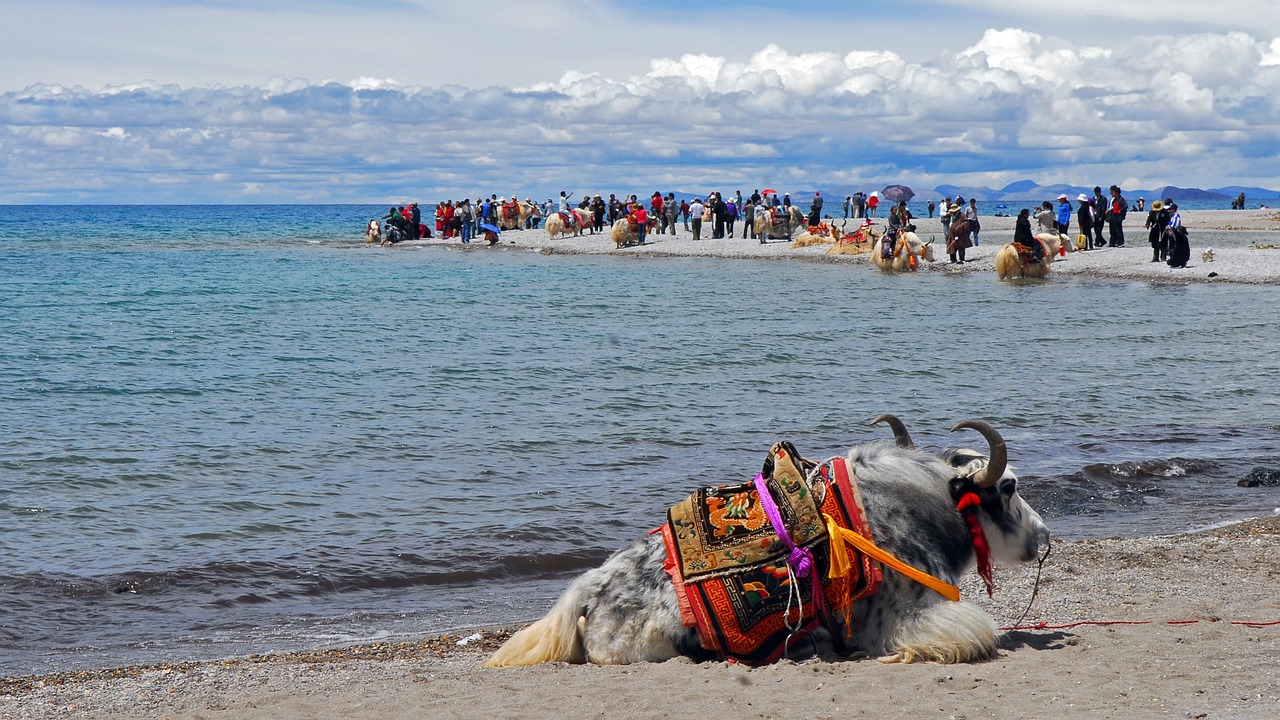
I don’t think I have ever seen such a dark night or such a beautiful starlit sky as I did that night by the Qinghai Lake.
Our tents were all identical. People would leave their tents in the middle of the night to relieve themselves then come back and enter the wrong tent, so all night we kept hearing annoyed sleepers complaining in Mandarin and various Chinese dialects.
Tibet Altitude
Without a doubt, you will need high altitude medicine and an oxygen tank on your trip. I’m not kidding, you actually will need oxygen in several locations depending on where you enter Tibet. Fortunately, oxygen tanks are readily available.
The Xining altitude is high enough at 2,300m above sea level, but Lhasa is 3,500m above sea level! It is wise to acclimate yourself to the altitude before arriving in Tibet.
Throughout the trip, our guide kept warning us that soon we would arrive at the highest point on the trip and confirming we had our altitude medication. We did. We had also stocked up on traditional Chinese medicine back in Xining. We had purchased a tasty tea guaranteed to help with the altitude.
We combined the Chinese and Western altitude medicines and, although we did feel the effects of the high altitude, at least we didn’t end up prostrate across the car seats gasping for breath while someone administered oxygen, as some of our companions did.
That night I had my first experience with oxygen. We stopped at a hotel that had oxygen tanks in all the rooms. The hotel was one of those massive government hotel structures you see in many parts of inner China. It was almost empty.
I wanted to try the oxygen tank even though I didn’t need it but I couldn’t get it to work. I finally figured out you had to insert coins into it like the old fashion vibrating beds in the States. Had I really needed the oxygen I would have been in deep trouble.
The high point of the trip, literally, was 5,231 meters high, or 17,628 feet. To put this in perspective, Mount Everest is 29,029 feet high. This is the highest I’ve ever been without an aircraft.
At this point, it was hard to breathe, and we had to walk very slowly because any exertion would exhaust us immediately. It was also incredibly cold. We kept throwing on layers and layers of whatever clothing we found until we looked ridiculous. Still, there was a little feeling of triumph at having made it this far in reasonably good shape.
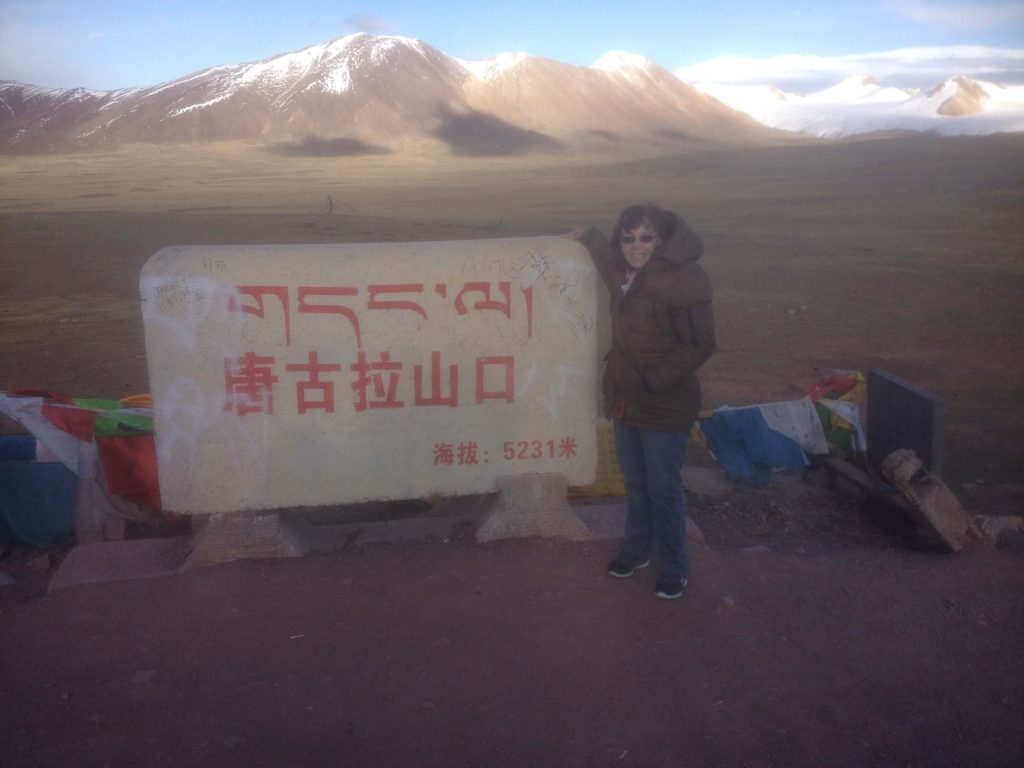
Finally, on the afternoon of the third day of a grueling journey, we drove into Lhasa, the capital of Tibet, ready to explore Potala Palace and Barkhor Street and the city itself.
You imagine Lhasa is going to be strictly monasteries and monks. There is plenty of that, but parts of the city are surprisingly modern.
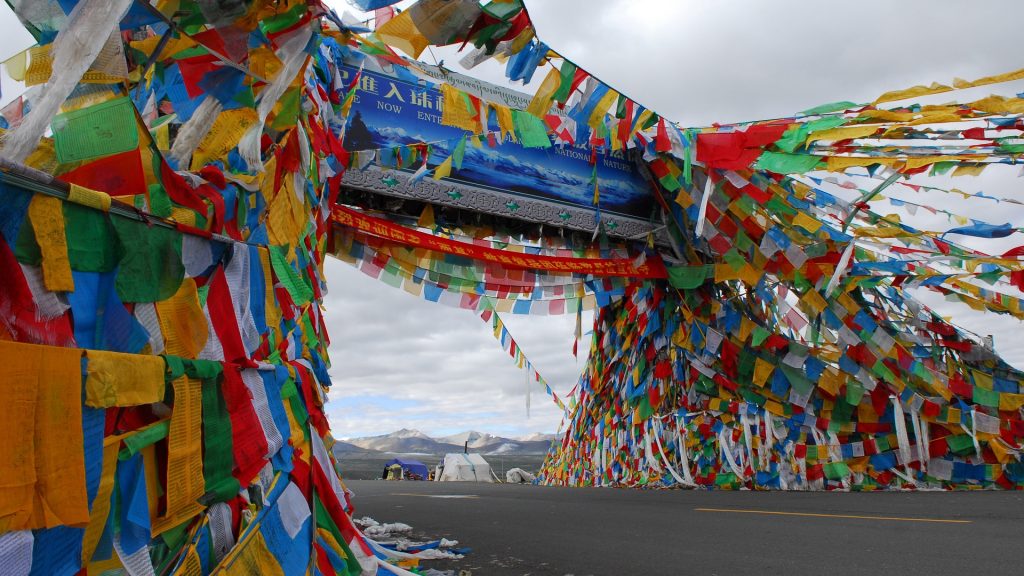
Things to Do in Tibet: Explore Potala Palace
Entering the city my first sight of Potala Palace was one of those “Oh, I’ll never forget this” moments you experience while traveling.
The sheer size and scope of Potala Palace dominate the city and it can be seen from virtually everywhere. At night the Palace is even more impressive.
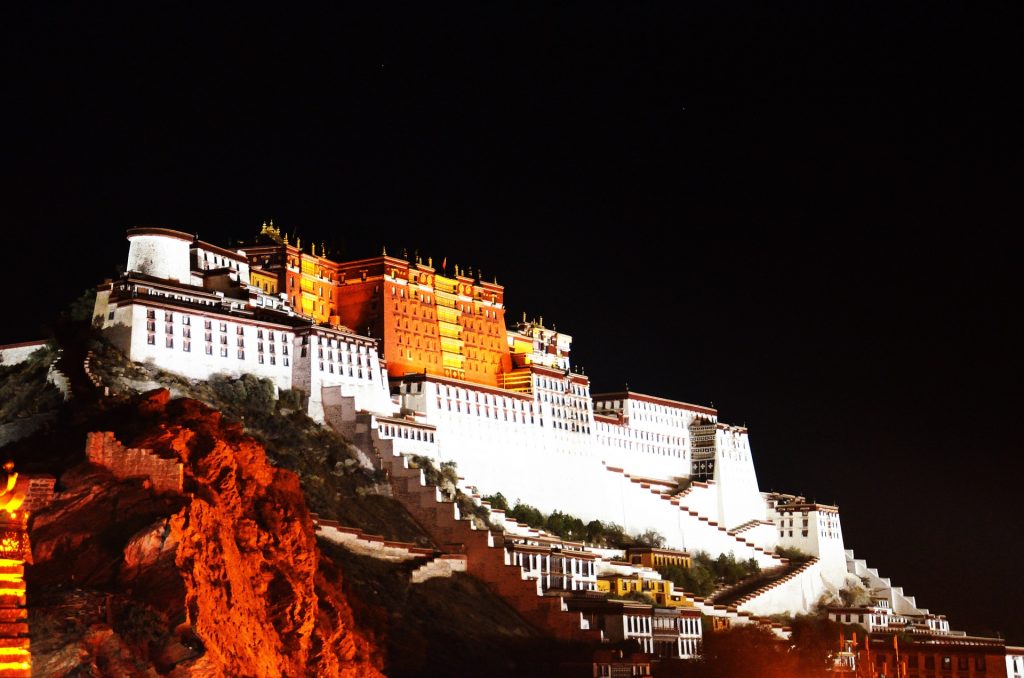
The Potala Palace is a UNESCO World Heritage Site. It was the home of the Dalai Lama until he fled to India in 1959 after the Tibetan uprising.
Construction started in 1645 reportedly over an already existing structure from 637AD. It’s actually two separate palaces. The White Palace houses previous Dalai Lama tombs, the traditional home of the Dalai Lama and monks’ quarters. The Red Palace is strictly used for religious purposes. Today it is a fascinating museum.
Since the Palace has 1000 rooms and over 200,000 statues, it would take weeks to see in its entirety, but there are many other things to do in Tibet.
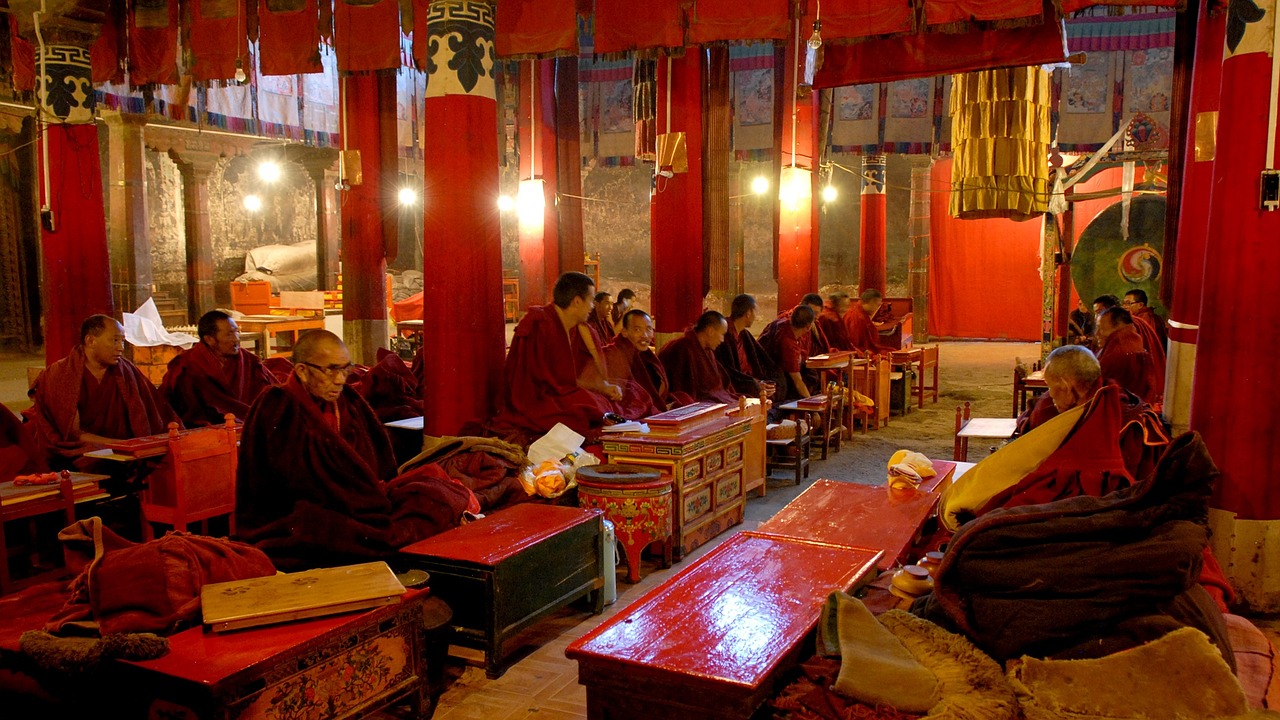
Getting to Potala Palace is almost as arduous as getting to Tibet. The 2,564 steps to the Palace are very steep but the views are magnificent. Climbing to the top of Potala Palace is certainly worth the effort.
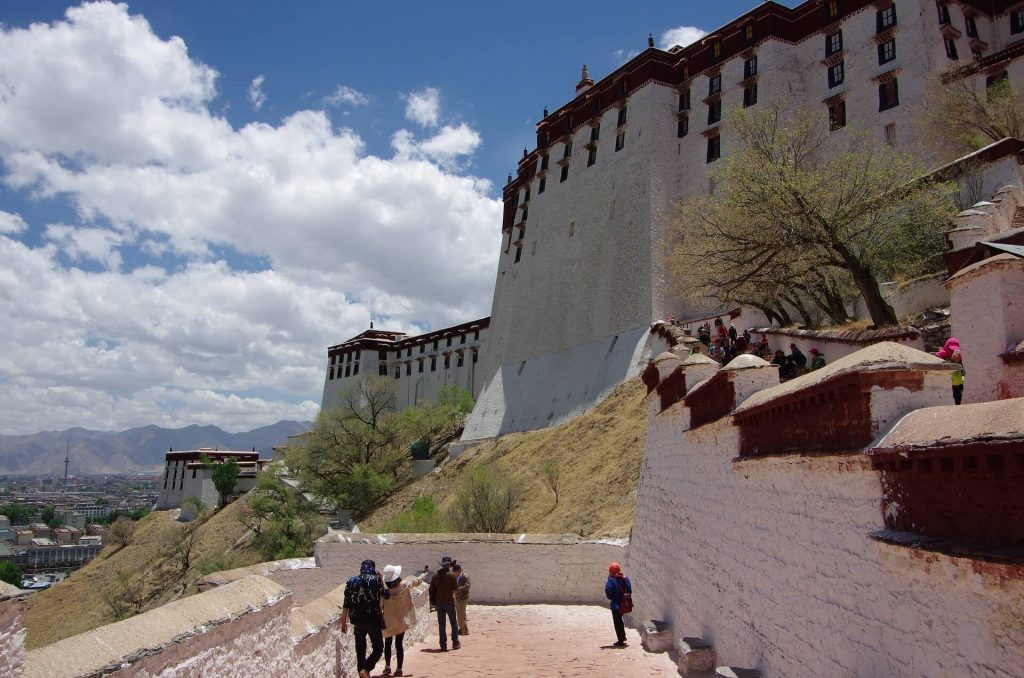
Unusual Things to Do in Tibet: Walking Clockwise on Barkhor Street
Besides Potala Palace, the must-see in Lhasa, Tibet is Barkhor Street. This street is remarkable in many ways and is exactly what you imagine Lhasa would look like. First of all, it’s a circular street. Tradition dictates that people walk on the street in a clockwise direction circling the Jokhang Temple, another must-see religious site. Walking in the opposite direction is not prohibited but it’s like fighting a commuter crowd during rush hour.
People watching is a great activity here, rivaled only by what you see on a New York City subway train. Since this is a holy site for Tibetans, devotions are performed on the street in public view. The locals bow and drag themselves on the street in the direction of the temple with padding attached to their knees and wood slabs protecting their hands.
Exploring this street and walking it in a clockwise direction is one of the most interesting things to do in Tibet.
The shops on Barkhor Street sell the same souvenirs you see throughout Asia with one exception; true, beautiful Tibetan jewelry which is unique to the area. The problem is there are so many degrees of quality at so many different prices that you need a degree in Tibetan jewelry before you feel comfortable enough to buy.
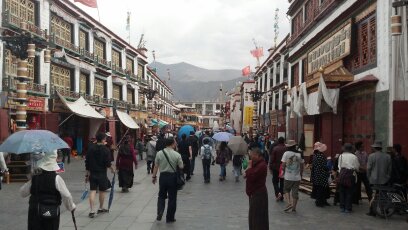
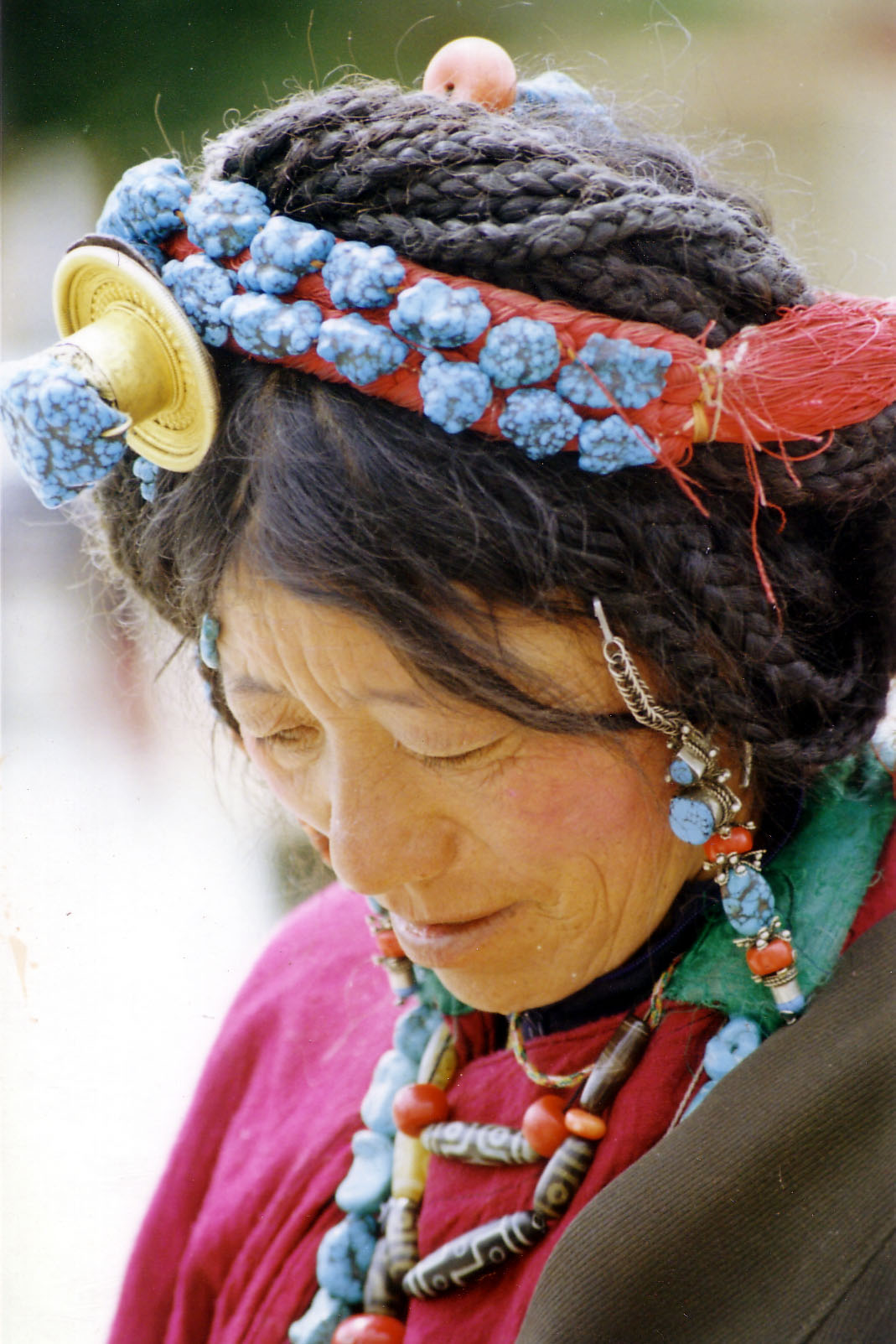
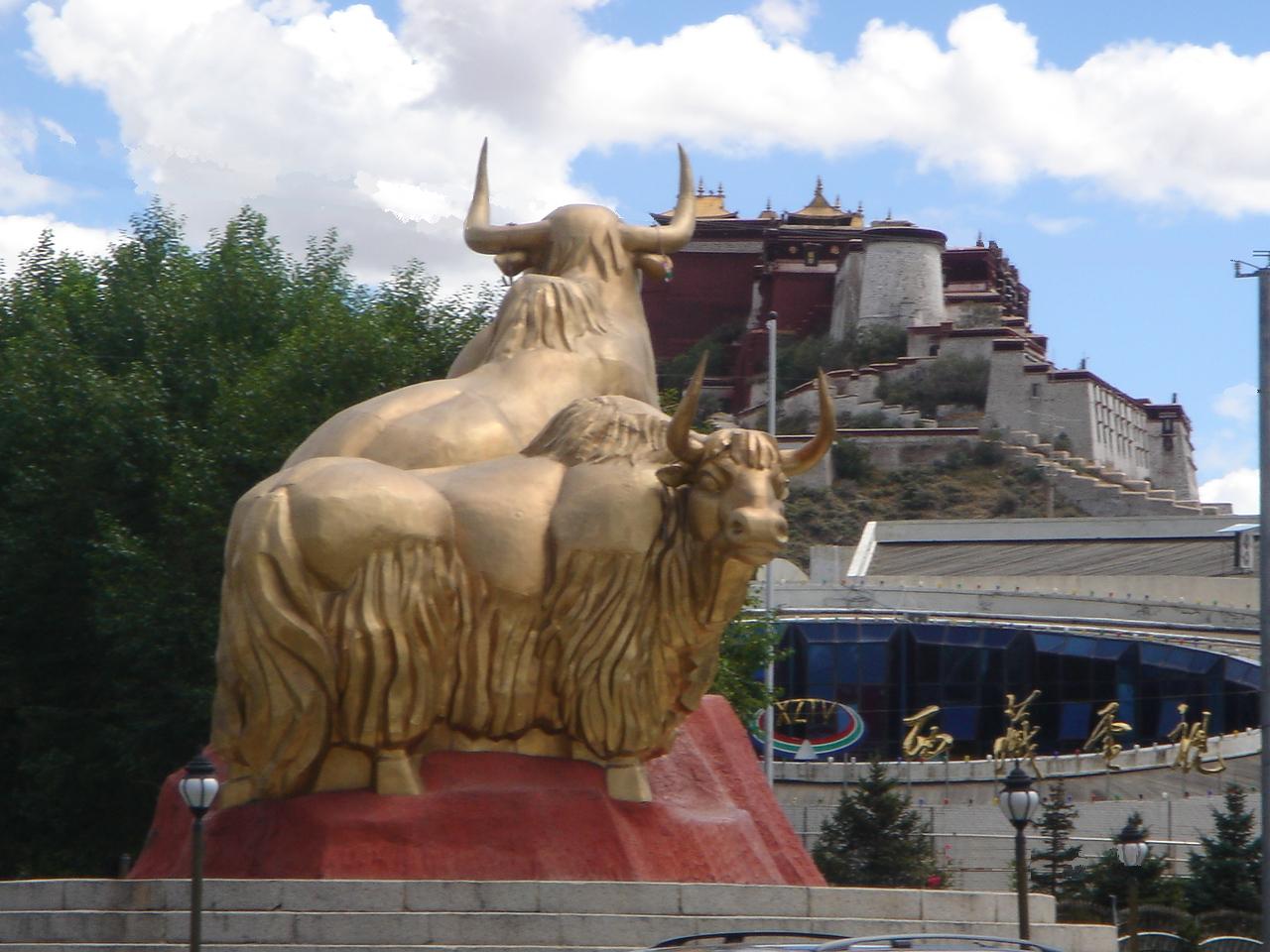
Sampling the Tibetan Cuisine
Tibetan food is delicious with Chinese and Indian influences. Meat dishes tend to be heavy consisting of yak and goat served in a spicy stew with vegetables.
Yak yogurt, butter, and cheese are pretty common and considered a specialty of the area.
The one ubiquitous drink is yak butter tea. I couldn’t imagine what yak butter tea tasted like and I was surprised to find it tasted as nothing more exotic than common everyday English tea with milk.
Sampling Tibetan cuisine is a delightful experience you cannot miss as you explore things to do in Tibet.
To accommodate increased international tourism to Lhasa, the city has opened many excellent restaurants. Thai, Nepalese, Indian, and of course, Chinese restaurants are available. There are even a couple of hamburger joints.
Most Tibetans, however, congregate in large food halls where two or three daily specials are served accompanied by yak butter tea.
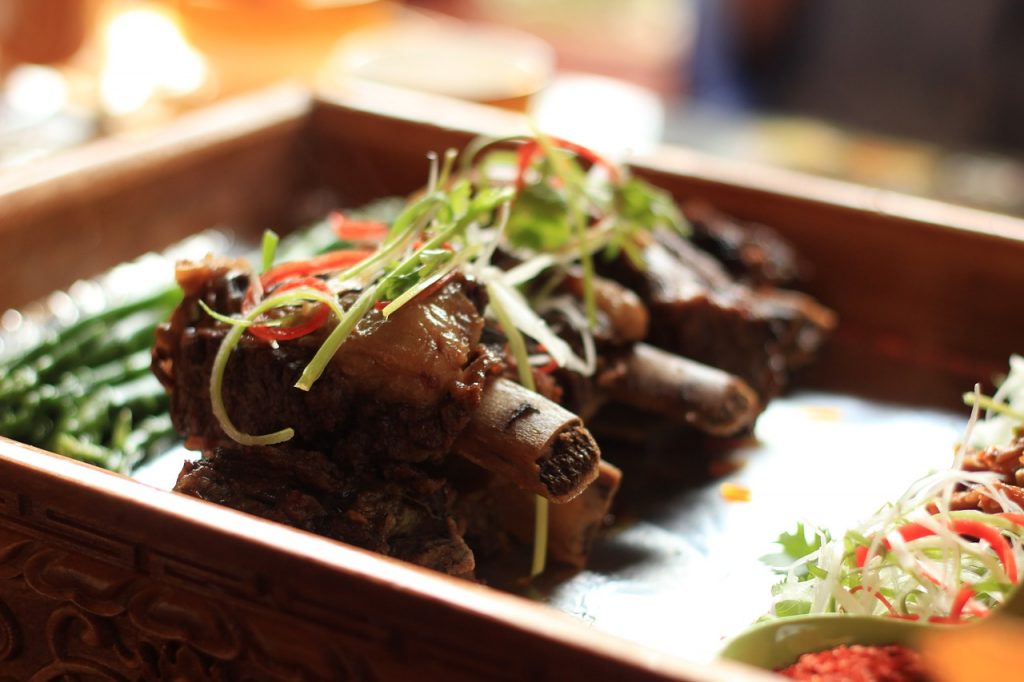
Getting to Lhasa, Tibet and exploring Potala Palace and Barkhor Street was well worth the effort. The people we met on the journey and in Tibet itself were kind and gracious.
What I loved the most were the unique sights, traditions, and food. Tibet is as magical and mystical as the name implies.
I hope this post can help you explore the many things to do in Tibet.
Want to know more about Tibet? Check out these useful guides:
If you like learning about Asia, you may also like these posts:
12 unique Japan experiences that won’t break the bank
Japanese toilets: the good, the bad and the funny
Ten fun and cool things to do in Beijing, China off the beaten track
Cambodia: The great monkey attack of Angkor Wat
What’s the most unusual place you have ever visited? What are your thoughts on visiting Lhasa, Tibet and exploring Potala Palace and Barkhor Street?
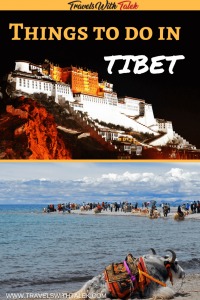

BTW, if you are getting ready for your trip, make sure to take advantage of these useful, money-saving links to book your trip:
- Research and book your flight with Skyscanner. I have found them to be the best because they list all airlines including the budget ones. You are always sure of having researched all options.
- For car rental around the world, Discover Cars has flexible pickup and drop-off options, I recommend Discover Cars.
- Book your accommodation with Booking.com. I find they have a wide selection and a nice, user-friendly, transparent website.
- Protect your trip and, more importantly, protect yourself with travel insurance. I use Travelinsurance.com and have been very happy with them.
- Looking for a small group tour to unforgettable destinations with top professionals? Intrepid Travel is your choice.
- For more general tours to any destination or attraction, book with Viator. Check them out.
- Need a visa? Get your visa for all countries with Passport Visa Express.
- Looking for a cool walking tour to explore a city? My favorite walking tours are offered by Take Walks.
- Food and drink tours are the best way to enjoy a city. And Devour Tours are my favorite.
- Looking for a good VPN to protect your security, privacy and freedom online while traveling? Nordvpn is your best option.
- The best and most economical way to stay connected while traveling is with an Airalo eSIM.
I personally use, and can recommend, all the companies listed here and elsewhere on my blog. By booking through these sites, the small commission we earn – at no cost to you – helps us maintain this site so we can continue to offer our readers valuable travel tips and advice.
















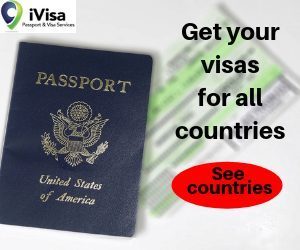




11 Responses
“No butchering sheep within city limits” … that really made me laugh! Killing and cooking a sheep for dinner sounds so out of the ordinary (for me at least!) that it was a little shocking – perhaps that’s what made it so entertaining! I never realized how difficult it is to get into Tibet; this was a real eye-opener, that’s for sure!
I know! Butchering sheep is not really a daily routine. Thanks for your comments. I’m glad I was able to make you laugh.
Wow I never knew you’d need oxygen tanks to travel to Tibet as I honestly didn’t realise how high it was! Thanks for sharing, I’ve learned something new from this post :)!
Also, I adore the picture of the rainbow with the road through the centre. 🙂
Tibet is pretty high, yes. We went to a hotel where they had oxygen tanks in the rooms. Can you imagine! Thank you for reading and commenting.
Tibet is really a beautiful place. As far as I am concerned, traveling to Tibet by train is the best way for us. The scenery along the Qinghai Tibet Railway is stunning and attractive. What’s more, taking a train to Tibet can help us adapt to the high altitude sickness. You can get more on the following text: https://www.greattibettour.com/tibet-train-tour
Hello colleagues, good article and nice arguments commented at this place, I am in fact enjoying by these.
Thank you for reading and commenting.
Thank you for the great post about your experience in travelling to Tibet.
There are few more important information i would like to share.
1) Please consult doctor and buy all the medicine you from home. Some medicine for high elevation are not available in China.
2) Taking train to Lhasa is not best for acclimatization to the Tibet elevation. Trains are pressurized and it is not 100 percent sure to help you acclimatize
3) lastly; Stay in xining for two days before coming to Lhasa.
These are good recommendations. I will incorporate them into the post. Thank you for commenting.
This is a great article, loved reading it and it gave me so much of information for my travel to Tibet.
Thanks you for your comments. Yes, Tibet is amazing. You’ll love it.